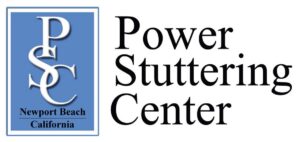The types of stuttering most commonly seen are below. These show how the stuttering is produced. And show what the person who stutters does when they stutter.
Types of Stuttering are classified as:
- Repetitions
- Single syllable whole word repetitions – like “I-I-I-I-I want a cup.”
- Part word and sound repetitions – like “give me a cu-cu-cu-cup.”
- Sound repetitions – like “give me a c-c-c-c-cup.”
- The shorter the repetitions element, the more severe i.e. sound repetitions.
- Prolongations – like “My cuuuuuuuuup is small.”
- Blocks – stoppage of any sound or breath flow when trying to produce words.
These types of stuttering need treatment.
Normal disfluencies are present in persons who do not stutter and are not counted as Stuttering Disfluencies. These include:
- Phrase repetitions or revisions – like “I went to, I went to the park” or ” I went to, I mean I ran to the park”
- Multisyllable whole-word repetitions like – “My breakfast, breakfast was very good”
- Interjections – like “um, ah, uh” are not counted as stuttering disfluencies.
New names for types of stuttering in the DSM-5
In the latest DSM-5 (Diagnostic and Statistical Manual) stuttering has a new name. Stuttering is no longer an official diagnosis. Instead, the name of the disorder has been changed to Childhood-Onset Fluency Disorder. Also known as Developmental Stuttering, this new diagnosis describes a speech disorder that has its beginning in childhood. And it usually starts during the pre-school years whatever the cause. If the disorder appears during adolescence or adulthood, the classification is Adult-Onset Fluency Disorder which is much rarer.
Treatment for different types of stuttering
As for as therapy goes, the type of stuttering appears not to matter. Stuttering is stuttering weather ir shows as repetitions, prolongations or blocks. When I stuttered years ago, I found that my type of stuttering changed over time. I started out Stutterng on vowels and prolonging them like “ahhhhhhh” before the word and even inside the word like “Mahhhhhrk” For whatever reason, I change the type of stuttering to repetitions (probably because it sounded less odd). I ended up using hesitations and long pauses until I was ready.
Later, I learned to replace all of my stuttering with a new way of speaking. It didn’t really matter which way I was stuttering, it was replaced by fluent and natural sounding speech. The MPI-2 Stuttering Treatment Program for Adults and Teenagers uses the same approach.

